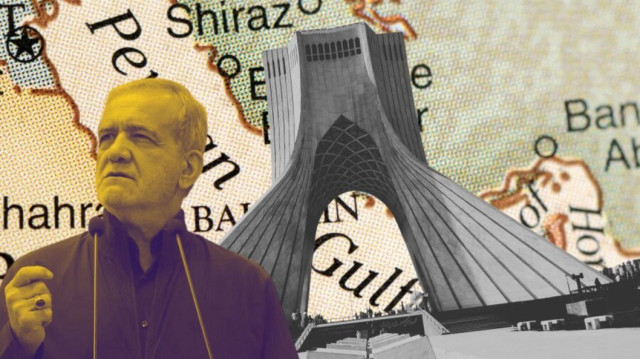

File photo
Tehran faces longstanding challenges, including overpopulation, air pollution, earthquake risks, water shortages, land subsidence
Iranian President Masoud Pezeshkian revived plans to move the capital, Tehran, to a new location near the southern borders along the Persian Gulf, according to media reports.
Pezeshkian discussed the proposal during a Nov. 20 visit to Khatam al-Anbiya headquarters -- an engineering firm linked to the Islamic Revolutionary Guard Corps (IRGC).
Pezeshkian said the challenges facing Tehran as the capital have become unmanageable, particularly in economic terms.
“Whatever we do, we're just wasting time. We have no choice but to move the country's economic and political centre to the south, closer to the sea," he said.
The reasons for the decision, its feasibility and possible outcomes had been discussed in previous years in Iran but were not implemented because of various challenges.
-Tehran faces several problems
Tehran's population could grow by 20 million in the next 30 years, potentially making city management nearly impossible, according to a report from the Iranian presidency.
Air pollution remains one of Tehran's biggest challenges, with experts warning it has reached critical levels.
The Health Ministry reported in 2022 that air pollution caused 20,800 deaths nationwide annually, with 6,400 in Tehran alone.
Tehran is also located in a high-risk earthquake zone, surrounded by active fault lines.
Experts warn that a major quake could threaten millions of lives.
A statement from Tehran's municipality in 2021 said 60% of the city's buildings do not comply with earthquake safety standards.
On the other hand, scientists from Iran's Construction and Housing Research Center found that Tehran sinks by an average of 25 centimeters (10 inches) each year.
The Center's 2018 study, based on satellite images from 2003 to 2017, showed the city center and northwest rural areas are affected.
And Tehran faces significant water shortages due to climate change and mismanagement.
Experts said the city's reservoirs are nearly empty, with Tehran consuming 25% of the country's drinking water.
-Can Iran's capital be relocated to the south?
Iran's proposed new capital offers strategic advantages, primarily economic, as the Gulf holds Iran's key oil and natural gas reserves.
The region has a lower earthquake risk than Tehran and the climate is better suited for sustainable infrastructure projects.
The Iranian parliament approved the proposal to move the capital from Tehran, which has nearly 20 million residents, on Dec. 25, 2013, with 110 votes in favor.
A council was formed to identify a suitable new location, but no significant progress has been made sence.
Due to Iran's ongoing economic challenges, the plan to relocate the capital is not expected to be realized in the near future.
#Iran
#Masoud Pezeshkian
#Tehran
